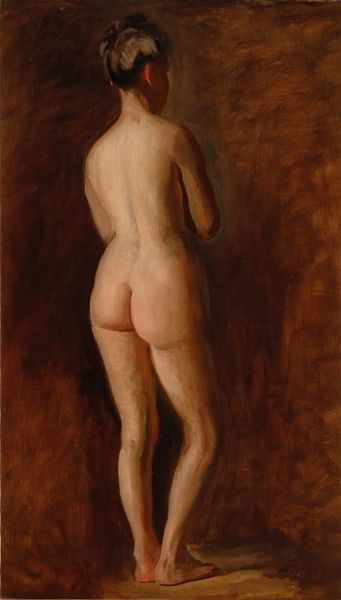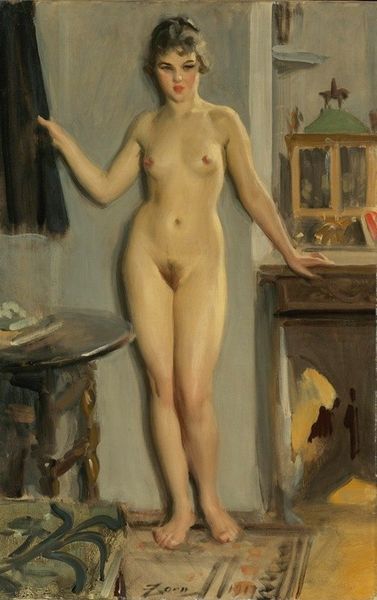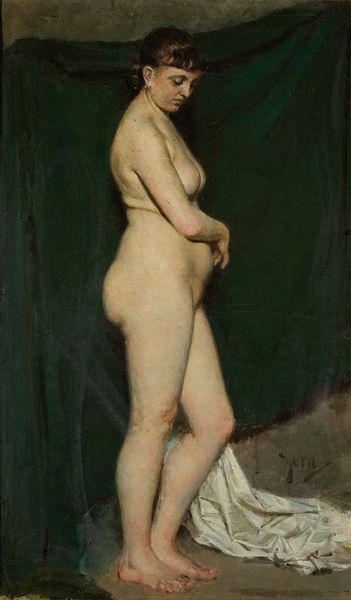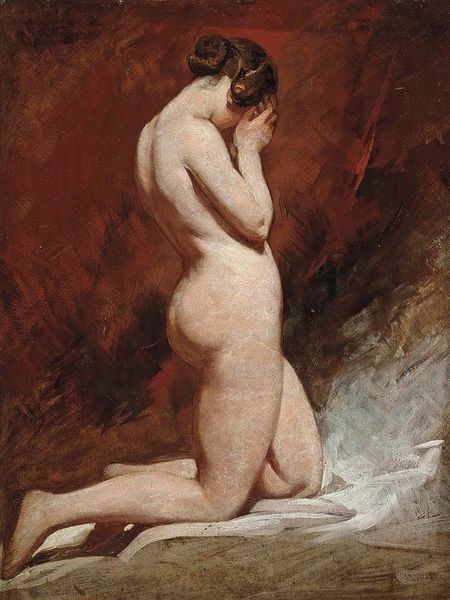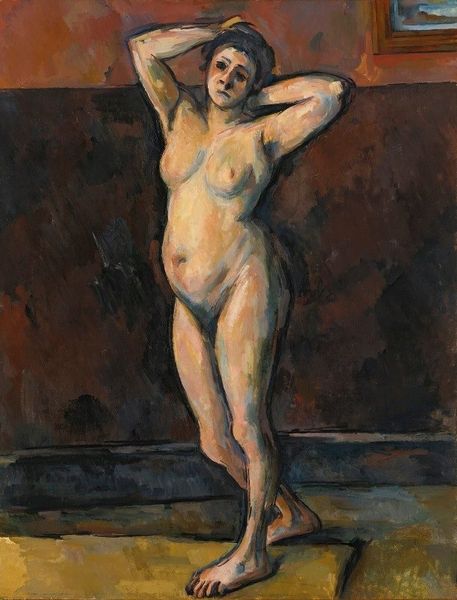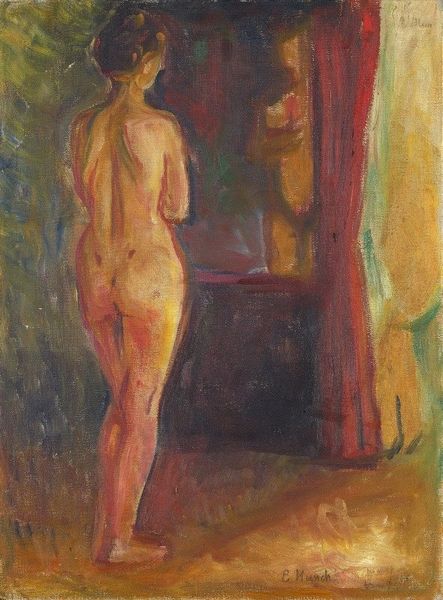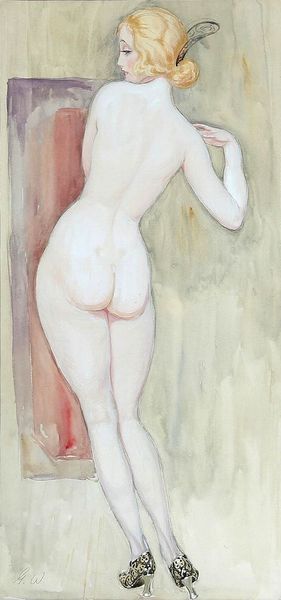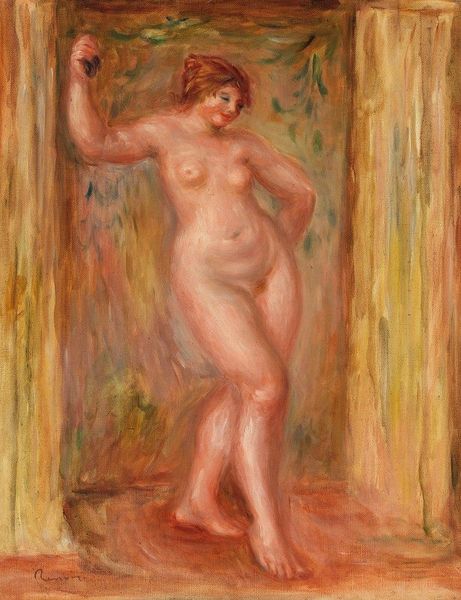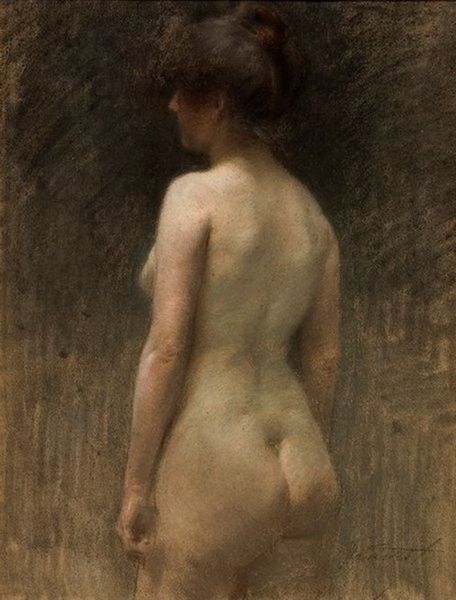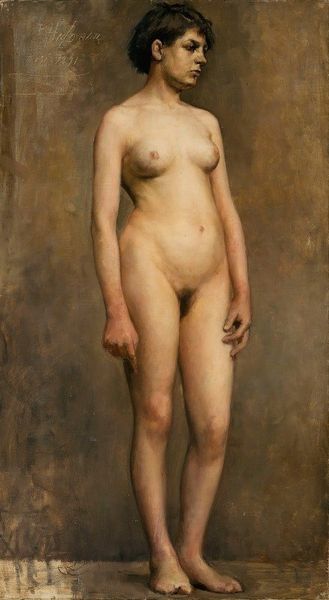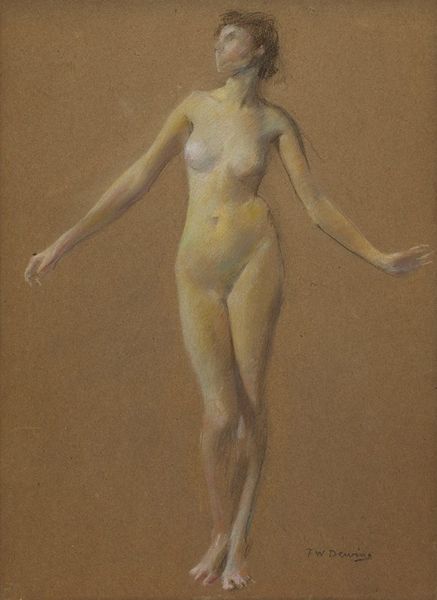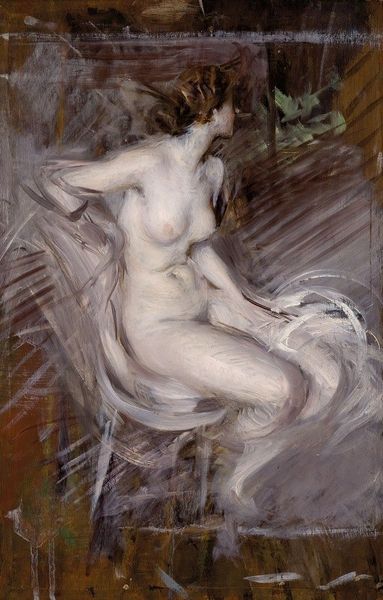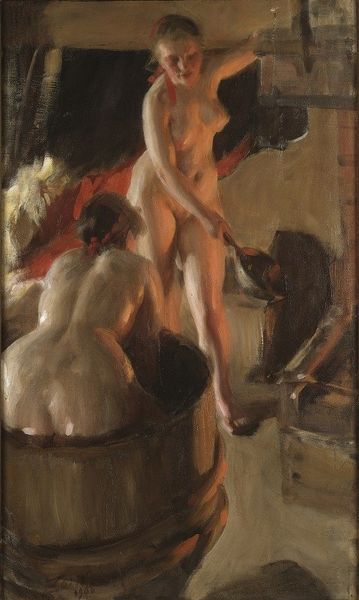
Copyright: Public Domain: Artvee
Editor: This is "Kuvädörren" by Anders Zorn, painted in 1905. It's an oil painting that presents a nude figure leaning against a wooden door. What strikes me is the intimacy of the scene, a glimpse into a private moment. How do you interpret this work? Curator: Zorn’s painting offers an opportunity to discuss the politics of the gaze and the representation of women in art at the turn of the century. Considering this through a feminist lens, we can examine how the female body is presented not necessarily as a celebration of beauty but, perhaps, as an object of contemplation. Do you see a vulnerability in the way the figure leans against the door? Editor: I do. Her pose feels both casual and a bit hesitant. It isn't the triumphant, confident nude we often see. Curator: Precisely. And this departure offers us a way to critique traditional power dynamics. Zorn, a man, is the painter. How does that context affect your perception of this image and the woman's presentation? It makes me wonder about issues of consent, agency, and whether this portrayal is truly subversive or merely continues a historical tradition of objectification. Editor: It's complicated. It makes me think about the artist's intention versus the impact on the viewer, and how much that is dependent on when and where they are seeing it. Curator: Yes. Considering intersectional factors adds depth. How might the experience of viewing this differ for someone from a culture with different norms regarding nudity or gender? Or a person of colour whose body has historically been hyper-sexualised? Editor: Wow, that really opens things up. I hadn’t thought about how my own background shapes my viewing experience so directly. Curator: Exactly! Art is never created in a vacuum, and our interpretations are equally contextualized. Editor: This has made me consider so much more than just the visual elements. Thanks!
Comments
No comments
Be the first to comment and join the conversation on the ultimate creative platform.
